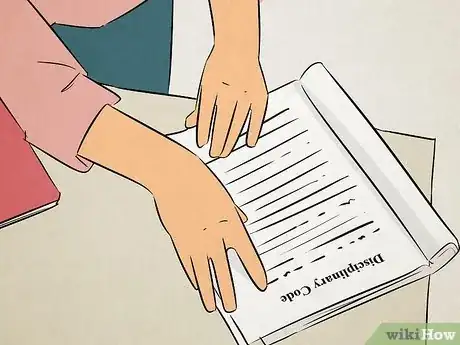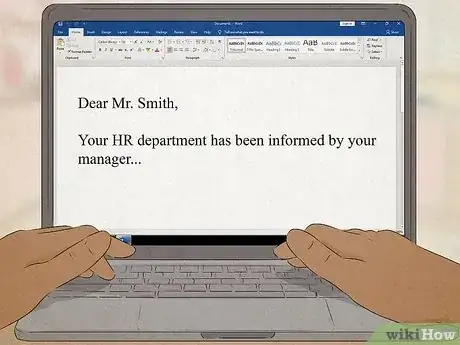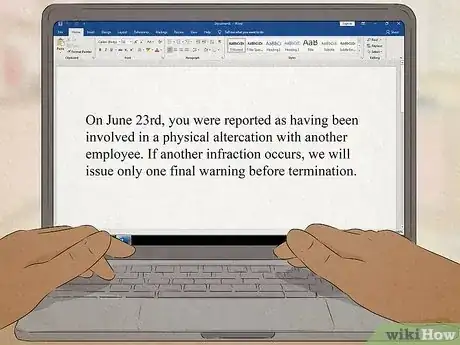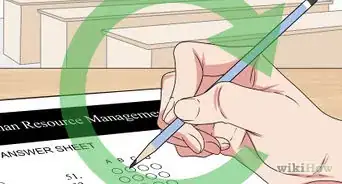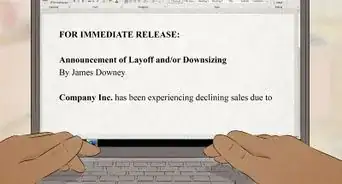This article was co-authored by Jeffrey Fermin. Jeffrey Fermin is a Performance Marketing Manager based in Miami, Florida, who currently works for AllVoices. He’s also the Founder of a full-service marketing company called New Theory. With over 10 years of experience, he specializes in digital marketing and content creation. He earned a Bachelor’s Degree in Psychology and a Bachelor of Education from Florida International University. Jeffrey has won a Microsoft Octas Innovation Award and is a TechCrunch Disrupt Runner-Up.
This article has been viewed 143,100 times.
If you are a manager or owner of a business with employees under your leadership, there may come a time when you have to talk to an employee about misconduct or a performance problem. If issuing a verbal warning doesn't solve the problem, you may need to issue a written warning. The warning will detail the problem, citing when it occurred and how long the warning is in effect. We'll walk you through the steps of how to issue a written warning to help maintain order within the company and give the employee a chance to correct their actions.
Steps
Deciding If It's Time For A Written Warning
-
1Follow the usual progression of warnings. Warnings that are issued to an employee are generally issued following a certain progression or escalation. By sticking to the progression you can help the employee understand exactly what level of discipline they are currently receiving and just how serious the issue is. Review the following progression of employee warnings to learn if it is time for a written warning:[1]
- Verbal warning
- Written warning
- Final written warning
- Termination of the employee.
-
2Follow the organization's code. Before you issue the written warning to an employee you will want to consult your organization's disciplinary code. Make sure that the code agrees with your decision to issue a written warning. Match the severity of the issue to the disciplinary code that your organization uses before you submit your written warning.[2]
- Some issues may not be very serious or are a first time occurrence with that employee. These may require a simple verbal warning.
- Other issues may be quite serious and could warrant a written warning, bypassing the verbal warning. These might include theft or threats of violence.
Advertisement -
3Gather information about the issue. Before you create a written warning you will need to collect all the relevant information regarding the employee and the issue at hand. Collecting this information will allow you to judge if the written warning is appropriate as well as allow you to write a detailed and effective warning.
- Learn the dates and times of any employee infractions.
- Detail any conversations or previous verbal warnings about this issue.
- Collect old documents which the employee signed, documenting their acceptance to company terms and illustrating their violation of them.
-
4Talk with the employee. Before you complete and issue your written warning you will want to speak privately with the employee in question. This meeting will allow you to further understand the situation and accurately judge if the next step is to issue a written warning to the employee.[3]
- The conversation may reveal that the issue was a misunderstanding and no further action is needed.
- You may be able to collect more information about the incident, allowing you to better issue your written warning should it be necessary.
-
5Determine if it is your duty to issue or write the warning. In larger organizations it may be unclear as to who should be the one to deliver the written warning, especially if the employee has more than one supervisor or manager. Make sure that it is company policy that you are the one required to write or deliver the warning to the employee.[4]
- Generally, the direct supervisor will issue the letter.
- In some cases, the decision to issue the written warning may be decided by a group meeting.
Creating And Issuing The Written Warning
-
1Include the necessary information. Although requirements may vary amongst organizations, there are some common elements that you will want to include in your written warning. Review the following points of information to build an informative and effective written warning:[5]
- Include the names of any parties involved.
- The nature of the offense.
- The date and time the offense occurred.
- Details of the warning and the time period involved in the warning.
- Instructions for the employee regarding how to remedy the situation.
- Consequences of this infraction as well as the consequences of future issues.
-
2Be as specific as possible. When you are writing your warning you will need to be as specific and detailed as possible. Including clear and concise details in your warning will help convey the exact issue at hand and allow your employee to better make corrections and avoid further offenses in the future.
- Include clear statements that describe the issue at hand. For example "On June 23rd, you were reported as having been involved in a physical altercation with another employee".
- Warnings should make clear what will happen if the employee's behavior is not corrected. For example "If another infraction occurs, we will issue only one final warning before termination."
-
3Deliver the written warning in person. Although the warning is written, you won't be sending it through company mail or email. Delivering a written warning will need to be done in person, during a private meeting with the employee in question. This will allow for direct conversation between both parties and a clear communication of the issue at hand.[6]
- Make the meeting for the earliest date available.
- Give some positive feedback as well. Don't just focus on the negative during the meeting.
-
4Make sure the employee understands the warning. Once you have written the warning and delivered it to the employee, you will want to make sure that the employee understands the warning. Discuss the terms of the warning, the duration it will last, why they are receiving it and how they can work to correct their course of action in the future.
- Most written warnings will have a place for signatures. Have your employee sign the warning, declaring that they understood and agree with it.[7]
- Allow the employee the right to dispute the claim as well. Some information may not be correct and they should have the right to question the warning.
Community Q&A
-
QuestionIs there a time limit to give a written warning?
 Community AnswerNo, there isn't time limit, as long as you gave a verbal warning first.
Community AnswerNo, there isn't time limit, as long as you gave a verbal warning first. -
QuestionHow long after an incident occurred are you allowed to issue an employee with a written warning?
 Community AnswerYou should do that immediately after you find out about the incident to avoid any future problems that might be ahead.
Community AnswerYou should do that immediately after you find out about the incident to avoid any future problems that might be ahead. -
QuestionCan a written warning be provided via text message?
 Community AnswerYou can, but that is an unprofessional approach. It can also be disputed that it was not received.
Community AnswerYou can, but that is an unprofessional approach. It can also be disputed that it was not received.
References
- ↑ http://www.labourguide.co.za/warnings
- ↑ http://www.labourguide.co.za/warnings
- ↑ https://www.legalzoom.com/download/pdf/employee-written-warning.pdf
- ↑ http://www.inc.com/guides/2010/05/writing-a-warning-letter.html
- ↑ http://www.labourguide.co.za/warnings
- ↑ http://www.inc.com/guides/how-to-communicate-in-a-crisis.html
- ↑ http://www.leadership-skills-for-life.com/written-warning.html
About This Article
While issuing a written warning to an employee may not be a pleasant process, it can help maintain order within the company and give the employee a chance to correct their actions. Typically, before giving a written warning you’d give a verbal warning. If the employee doesn’t respond with a shift in behavior, then you’ll have to follow up with a written warning. Collect all of the relevant information regarding the employee and the issue at hand so you can write a detailed and effective warning. This should include the names of all parties involved, the nature of the offense, dates, times, and how the employee should fix the situation. Deliver the warning in person during a private meeting so you can have a direct conversation about the matter. To learn how to deal with an employee’s dispute of a warning, keep reading.

